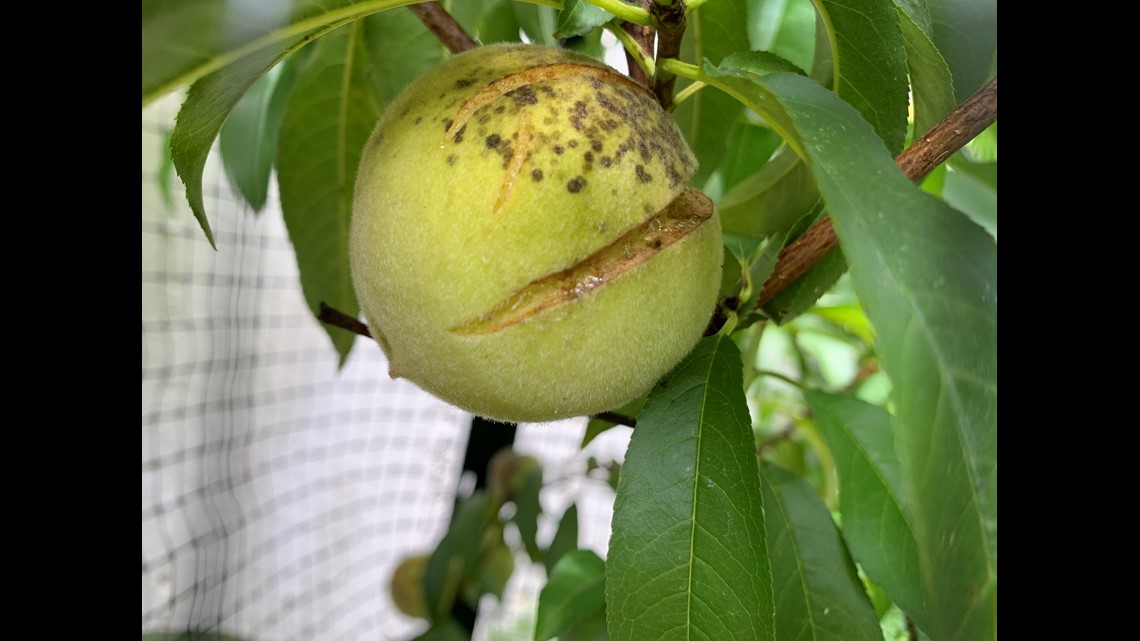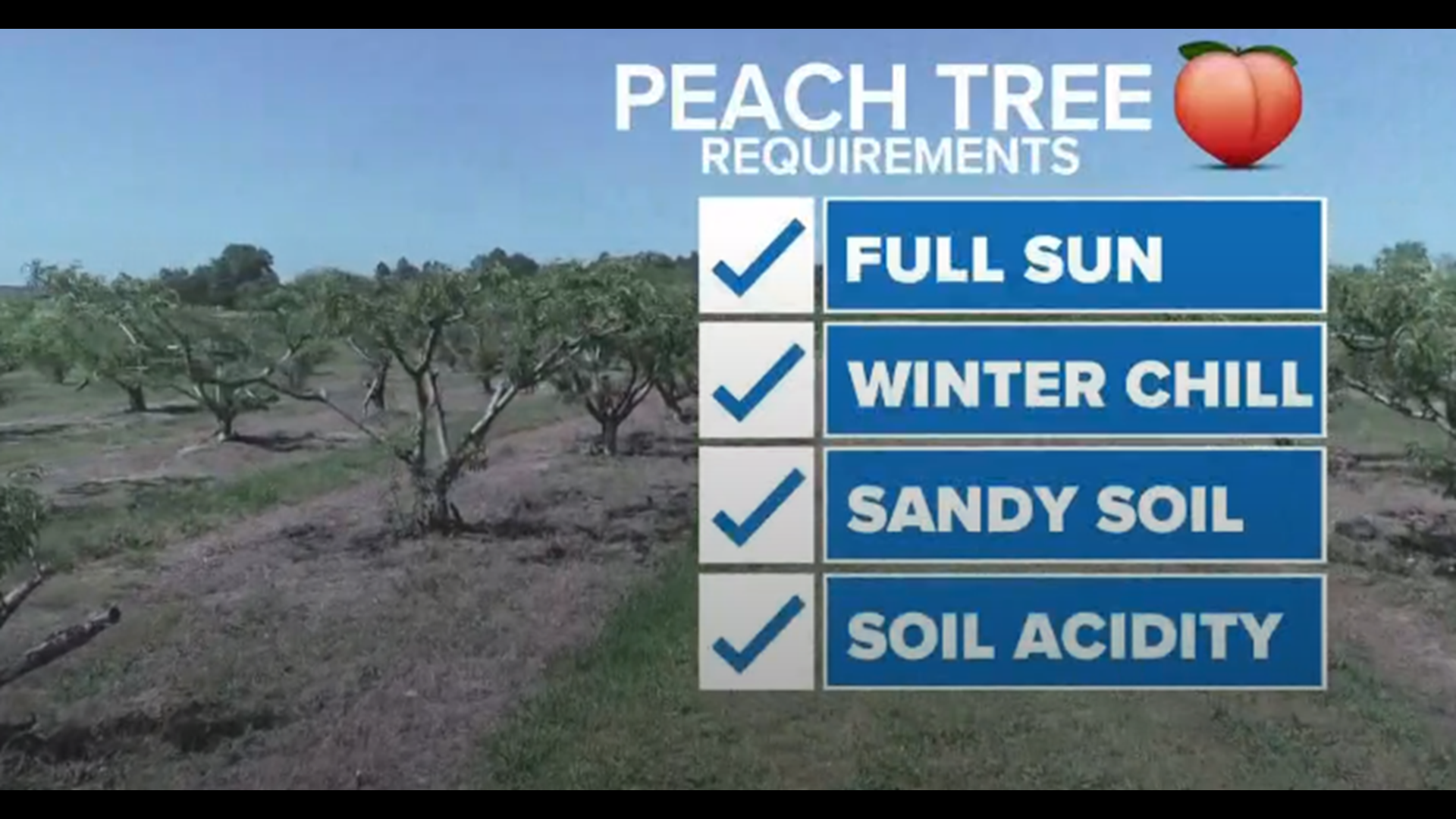COLUMBIA, S.C. — Although our neighbor Georgia is recognized as peaches, South Carolina produces more each year. South Carolina is the second leading producer for peaches in the United States, only behind California, but that doesn’t mean they’re maintenance free. Our peach tree in Gandy’s Garden at WLTX failed to fruit this year and we were not alone. We spoke to the Clemson Extension Office and the South Carolina Department of Agriculture to get an update on this year’s peach season and learn how to grow these trees ourselves.
Weather’s Role
Peach Season runs from May through August in South Carolina, but the weather outside those months can have a big impact on the fruit’s success. Peaches require a certain number of “chill hours” in the winter. “Chill hours” are defined as the number of hours the temperature drops below 45 degrees each winter. Some varieties require more chill than others, but if the tree doesn’t meet it’s chill hour requirements, it will fail to fruit. This winter was very mild, but had enough chill hours for the peach varieties recommended for our climate to fruit.
Record rain in the winter and heavy rain through spring posed challenges for farmers and damaged some early fruit. South Carolina Peach Council Director Kyle Tisdale tells us hail from severe thunderstorms in spring damaged some developing fruit and heavy rain in May opened the door to diseases like “brown rot”, which causes the fruit to drop off too soon. May 2020 was the second wettest on record in Columbia, SC.
Peach Season 2020
The season for peaches in South Carolina starts in May and runs through August, but July is often the best time to get local peaches because they’re at their biggest, and there’s plenty available. We won’t know the official numbers for the season until the season ends this fall, but experts agree that for many growers, it’s been a good season. Tisdale says the peach numbers for 2020 may not be as high as previous years by volume, but the peaches have been ripening consistently, which is a good thing.
Warm weather earlier in the year also has peaches ripening ahead of schedule in 2020. This year’s peaches are ripening two weeks ahead of the average and a week faster than 2019. While it means the season may end a week or two early, Tisdale explains that the early ripening time may have helped farmers compete with growers to our south in Georgia and Florida.
Growing your own Peaches
I planted the peach tree in Gandy’s Garden back in March, and did not have good results. The tree itself grew well, although deer nibbled on the branches that poked outside of the protective netting we placed to keep the tree safe. The fruit had major problems in the ripening process, eventually cracking and splitting in half due to heavy rain in May. Our Gandy’s Gardeners on Facebook also reported problems with peaches. On a poll in the group, the majority of gardeners growing peaches said they did not have success with getting fruit.


Another gardener on Facebook explained the fruit she purchased had broken pits in the middle. Tisdale explains that’s a common problem that could be weather related or even a pollination issue. Farmers have no control over that problem, but the issue doesn’t affect the quality of the fruit as far as taste goes.
Peach trees require a few years to establish themselves before having good fruit quality. Tisdale recommends waiting 3 years of doing everything right before expecting good fruit. Melton explains that pruning off fruits early in the season helps with fruit ripening. Branches overloaded with peaches can reduce the success of fruit ripening.
Peach trees can be grown successfully, if they’re grown under ideal conditions. The Clemson Extension Office recommends growing peaches in full sun, with fast draining and lower acidity soil, and with winter chill hours in mind before choosing a variety. Peaches do not require other trees nearby to produce fruit and only bloom in the spring, which is why late spring freezes can be a problem for certain varieties.
The best time to plant a peach tree is when the tree is dormant in the fall or spring. A tree’s success will vary from year to year, but for the farmers in South Carolina, heavy rain could be a bigger problem for peaches then a mild drought. Unlike most farms in South Carolina, peach orchards are irrigated.

